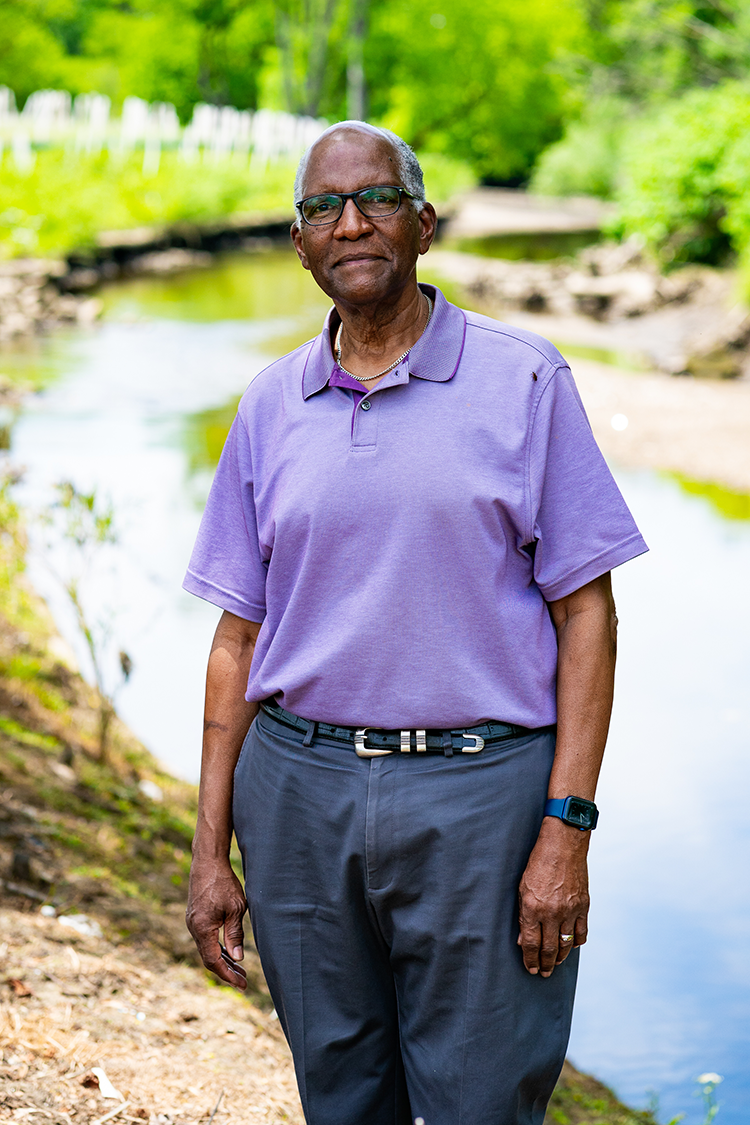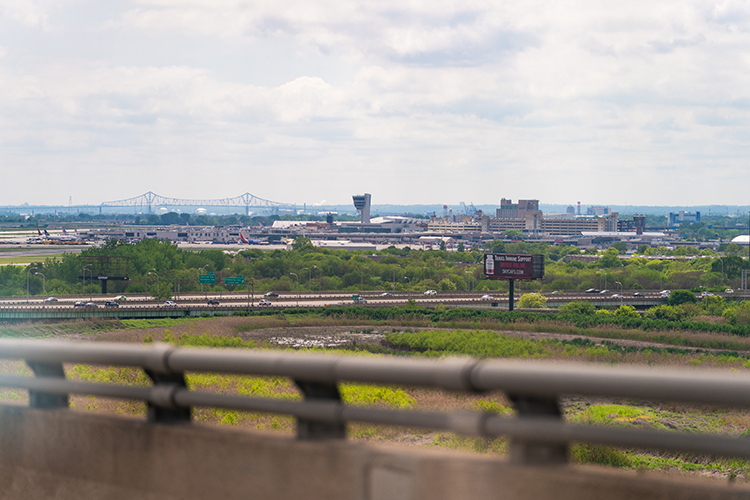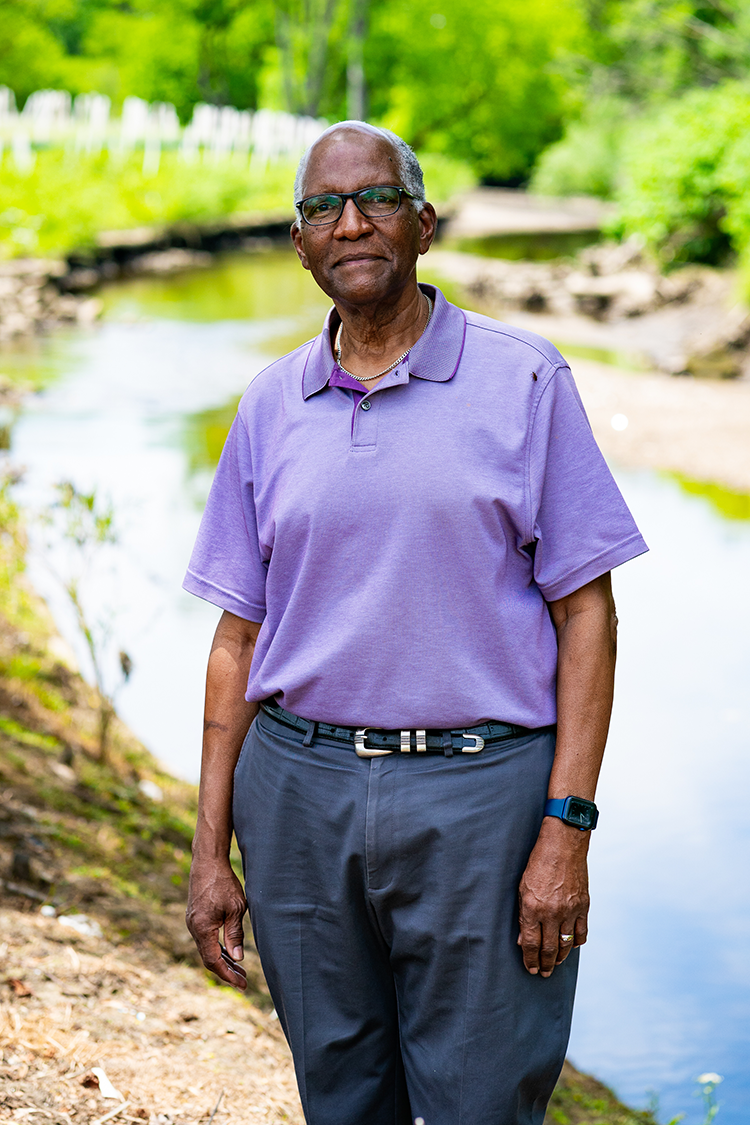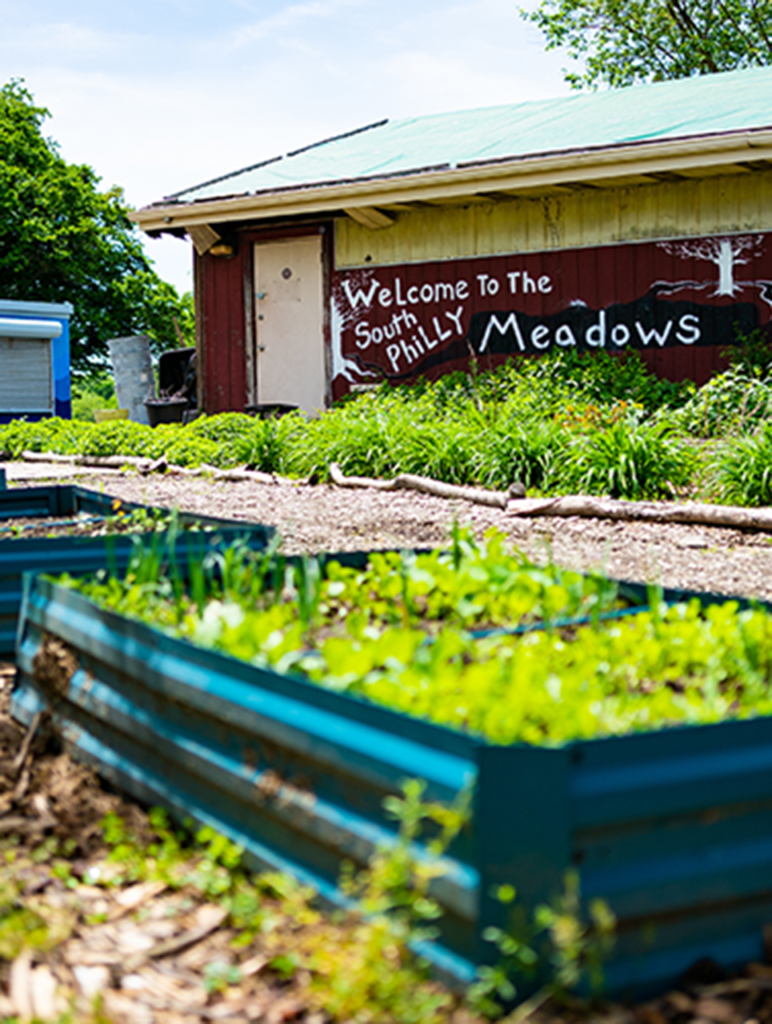Ted pickett counts himself lucky. He and his wife were home when the flooding started. As Hurricane Isaias dumped rain over the Delaware Valley and Darby Creek crested its banks on August 4, 2020, he and his wife got to work. “We were able to mitigate a real nasty thing,” Pickett says. For five hours they pushed water through the first floor of their house, on Buist Avenue in Southwest Philadelphia’s Eastwick neighborhood, to the driveway where it could drain.
The water damaged their air conditioning system and ruined sheetrock on the first floor, but insurance paid for repairs, and by the end of December their house was back to normal.
We’re afraid of major flooding events and damage they can cause: the loss of life, trauma.”
— Carolyn Moseley, executive director of the Eastwick United Community Development Corporation
Not all their neighbors have been as lucky. Funding from the City has helped replace hot water tanks and heating systems for some uninsured residents, according to Carolyn Moseley, executive director of the Eastwick United Community Development Corporation. Additional funding is expected to pay for home repairs such as replacing damaged drywall, but the community’s flooding experience has made it wary of development that could exacerbate flooding in the Darby Creek watershed. “We’re afraid of major flooding events and damage they can cause: the loss of life, trauma. People have been flooded repeatedly,” Moseley says.

This is why Moseley and other leaders in Eastwick are keeping a close eye on Philadelphia International Airport’s expansion plans.
The Army Corps of Engineers is currently evaluating the City’s request for permits necessary to complete the airport’s expansion. Moseley has requested that the Corps hold hearings to discuss the potential impact of an airport cargo services expansion on flooding in her neighborhood. “We’re not against the airport expansion, but we don’t want it done at our expense,” she says. The Corps has not yet responded to her request.
The airport seeks to “expand its air cargo facility footprint by 136 acres and almost triple its cargo building square footage from 600,000 to 1.4 million,” according to the airport’s website (the airport declined to comment for this story while their permits are pending). Much of the new facility expansion will take place on recently purchased wetlands to the west of the airport, and local environmental experts as well as Eastwick leaders are concerned that the loss of the greenspace will make flooding worse in Darby Creek and beyond.
The airport, like Eastwick, sits almost entirely within FEMA’s 1% and .2% floodplains, describing the likelihood of a flood in any given year, based on historical flooding. When a creek or a river rises over its banks, its floodplain is where the extra water goes. Any construction or alteration that elevates land above the floodplain or that replaces vegetation with impermeable surfaces like asphalt or concrete can essentially shrink the floodplain. The next time it floods, the waters will have less space to spread out and soak in, forcing them higher.
“Any time you put in new development, it always has an impact, as much as developers or land owners state how they’re meeting all the state requirements,” says Jaclyn Rhoads, the president of the Darby Creek Valley Association and president of the Friends of Heinz Refuge, which sits along Darby Creek upstream from the airport. “Does that mean we never develop? No, but in light of the history of the area, taking wetland away is a bit more egregious.”
The expansion could increase flood risk in the Delaware estuary beyond Darby Creek. “The airport is part of a larger narrative about more fill getting put in the floodplain,” says Joshua Lippert, an environmental advocate in Philadelphia who until recently served as the City’s flood plain manager. In the broader Delaware River floodplain, projects like the capping of I-95 at Penn’s Landing, construction at the Navy Yard, and the airport’s cargo facilities expansion add up to more-intense future flooding in what remains.

The cargo expansion will also have a negative climate impact beyond its watersheds. Greenhouse gasses produced by aircraft make up about 93% of the airport’s overall emissions. Airplanes are generally the most greenhouse-gas-intensive way to move cargo, producing more than three times the emissions of trucks per unit of cargo over a given distance, more than five times the emissions of trains, and more than 10 times the emissions produced by marine shipping. “Carbon pollution is already changing weather patterns in Philadelphia, but we can make sure that these shifts are as limited as possible by reducing our contributions to climate change,” according to the City’s 2016 Greenworks vision document. Increasing air cargo traffic to the airport runs contrary to the City’s goals to reduce greenhouse gas emissions.
The airport’s planned cargo facility sits five miles west of FDR Park, but it is nonetheless at the center of the park’s renovation. The core problem that Philadelphia Parks & Recreation seeks to resolve at FDR Park is its low elevation, low enough for groundwater to erode the road surfaces and turn grass into a soggy mess. Most of the park is below high tide on the nearby Delaware River. A tide gate in the Navy Yard is supposed to keep the Delaware’s water from flowing into the tidal Hollander Creek, which drains the park, but let it out as the tide recedes. “[T]he tide gate only partially works,” however, according to the FDR Park Master Plan.
Federal law requires the City, which owns the airport, to “mitigate” the loss of wetlands by creating new wetlands somewhere else, and the City plans to comply by creating 45 acres of wetlands at FDR Park by digging soil out of a currently off-limits, wooded section of the park. All that soil needs to be dumped somewhere, and using it to raise the elevation of much of the park could resolve the groundwater flooding problems. The airport will also repair the tide gate.
Although mitigating the lost wetlands at FDR Park might satisfy federal requirements, local advocates say that the city ignored
potential locations within the Darby Creek watershed. Alternatives noted by Rhoads include 120 acres of undeveloped land next to the refuge. “It’s not officially preserved in any way. Why couldn’t that have been an option?” Rhoads says. “I’m sure it’s a cool project, don’t get me wrong, but it has nothing to do with an area that you are impacting. And guess what, why not do the work at FDR and do the mitigation in the watershed, considering all the added benefits?”
In April 2021 the Federal Aviation Administration (FAA) published a final environmental assessment finding that the cargo expansion project would have no significant impact. A letter submitted by Eastwick Friends & Neighbors Coalition, the Delaware Riverkeeper Network and the Darby Creek Valley Association as a comment on a draft of the FAA’s finding complained that the assessment did not consider impacts on Eastwick.
“There is no mention of the overall and cumulative impacts of the air cargo expansion project on the neighboring community of Eastwick,” the letter says. “Eastwick is an Environmental Justice community overburdened by legacy pollution and with a predominant population of people of color. Impacts include but are likely not limited to increased traffic and noise from the construction and operations, air quality, potential aggravation of flooding conditions, increased disturbance to use and enjoyment of the Heinz Refuge and the health effects that those multiple impacts can lead to.”
“For some reason the airport decided to go in its own direction,” says Earl Wilson, president of the Eastwick Friends & Neighbors Coalition. “The information we were able to put in was pushed to the side or ignored.”
“The results of this make you think, ‘What’s the point?’” says Wilson, promising to fight on. “We are the kind of people who are organized, and we will not quit on these issues.









[…] On the other side of PHL, Eastwick residents fear that the cargo project will only worsen future flooding in their town. […]